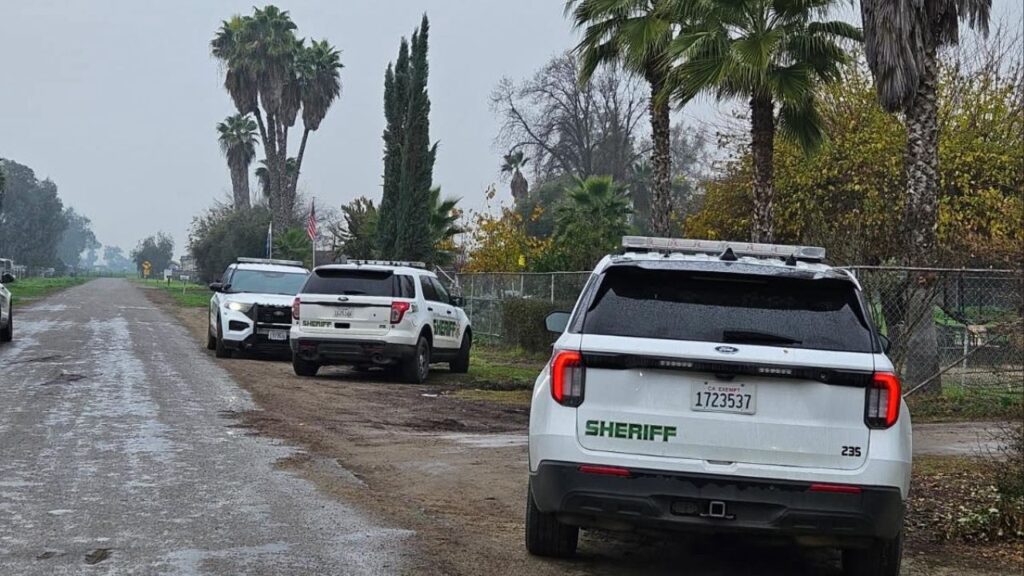Share
As the Creek Fire continues to ravage the Sierra, the debate about how to prevent this type of fire again leads down divergent paths.
Cal Fire points to the 80%-90% tree mortality rate from bark beetle in the Creek Fire’s territory as a major contributing factor.
But Sierra Club California and the Center for Biological Diversity cite studies showing dead trees from bark beetle are no more flammable than other trees. Instead, they say, the problem is too much fire suppression and homes that interface with Mother Nature.
GV Wire℠ spoke to retired Socal Edison project manager John Mount. He counters that the two environmental groups are leaning on science that doesn’t take into account California’s unique topography. He also said that the studies cited weren’t based in the Sierra.
Sierra Club California

“There is a controversy about dead trees.” — Kathryn Phillips, Sierra Club California Director
Sierra Club California Director Kathryn Phillips told GV Wire℠ by phone the amount of fire suppression over the years has led to a large increase in trees in the Sierra Nevada.
“There is a controversy about dead trees,” said Phillips. She pointed to a 2013 study that concludes: “Most available evidence indicates that bark beetle outbreaks do not substantially increase the risk of active crown fire in lodgepole pine and spruce forests under most conditions.”
Phillips says the focus should turn from logging or mechanical thinning of forests and focus on defensible space around homes and cabins.
“I don’t see logging as a way to do this,” said Phillips. “Defensible space around homes of 100 feet, and hardening of homes with things like protective screens to prevent embers from getting into attics is what needs to be emphasized.”
She again pointed to the 2013 study. It states: “Once (bark) beetle populations reach widespread epidemic levels, silvicultural (practice of controlling growth) strategies aimed at stopping them are not likely to reduce forest susceptibility to outbreaks. Furthermore, such silvicultural treatments could have substantial, unintended short- and long-term ecological costs associated with road access and an overall degradation of natural areas.”
Studies: Dead Trees Don’t Impact Fire Severity

“Studies indicate that there is no effect of dead trees on different aspects of wildfire behavior including wildfire severity, rate of spread, or extent.” — Shaye Wolf, Climate Science Director Center for Biological Diversity
“Studies indicate that there is no effect of dead trees on different aspects of wildfire behavior including wildfire severity, rate of spread, or extent,” said Shaye Wolf. climate science director of the Center for Biological Diversity. “What Sierra Club California told you about dead trees being no more flammable is correct. In fact, it’s not just that 2013 study.”
She pointed to four other studies to support her position.
- Hart, S.J., et al., Area burned in the western United States is unaffected by recent mountain pine beetle outbreaks, 112 PNAS 14 (2015)
- Bond, M.L. et al., Influence of pre-fire tree mortality on fire severity in conifer forests of the San Bernardino Mountains, California, 2 The Open Forest Science Journal 41 (2009)
- Meigs, G.W., et al., Do insect outbreaks reduce the severity of subsequent forest fires? 11 Environmental Research Letters 4 (2016)
- Hart, S.J. & D.L. Preston, Fire weather drives daily area burned and observations of fire behavior in mountain pine beetle affected landscapes, 15 Environmental Research Letters 054007 (2020)
The Center for Biological Diversity’s website says the organization is “fighting a growing number of national and worldwide threats to biodiversity, from the overarching global problems of unsustainable human population and climate change to intensifying domestic sources of species endangerment, such as off-road vehicle excess.”

Wolf: Thinning Forests Leads to Faster Burning Fires
Wolf said that thinning the forests isn’t an effective way to protect communities from wildfires and it “can even make fires burn hotter and faster.”
Wolf said that the Creek Fire rapidly burned through areas that were recently logged (including the removal of large dead trees) under the claim that this would curb future wildfires.
“In fact, the logged areas are where the fire spread fastest,” Wolf said. “Dead trees — standing or fallen — provide important benefits such as wildlife habitat, soil stabilization, water quality, and carbon storage.”
She doesn’t see how logging could have prevented what’s happening in the Sierra National Forest.
“Forests with large numbers of dead trees (known as “snag forest”) support among the highest levels of biodiversity of any forest type. All these benefits are lost when dead trees are logged,” Wolf said.
She said that California should help communities retrofit homes with fire-resistant roofing, rain gutter guards, and ember-proof vent screens, along with pruning vegetation in the defensible space immediately surrounding homes.
“These are the most effective actions for wildfire safety, but they are getting the fewest resources from the state and federal government,” Wolf said.
Mount: Studies Are Deceiving

“Here’s the problem. … That’s firewood up there.” — John Mount, retired Socal Edison project manager
Mount doesn’t dispute the findings of the studies, but he noted that “all the studies were done in the Rocky Mountains. It’s totally different here in the Sierra.”
The studies defy common sense, he said.
“Here’s the problem. … That’s firewood up there,” Mount said. “The fire return interval here is five to 10 years. In the Rockies, it’s at least every 300 years.
“To compare the Rockies to the Sierra Nevada is ludicrous. Fire burns in the Rockies whether trees are green or dead.”
Mount said that he’s told Sierra Club members they’re using the studies out of context.
“I’ll guarantee you on my life this fire (Creek Fire) has burned hotter because of the dead trees,” he said.
Cal Fire: Bark Beetle Tree Mortality a Significant Factor
“So many of the trees have died creating significant fuel for the fire to burn,” said Cal Fire Public Information Officer Daniel Berlant in a video about the Creek Fire. “Massive amounts of pine trees that have died off over the years due to drought and due to the bark beetle.”
Berland cited a website showing the number of dead trees in parts of the Creek Fire with a “red” rating — indicating there are 15 to 40 dead trees an acre.
In an email to GV Wire℠, Berlant said, “The sheer number of dead trees all in close proximity plays a major role in fueling wildfires, and is absolutely a factor in why the Creek Fire was able to explode in size.”
What a Federal Official Says
Jim Hubbard is undersecretary for Natural Resources and Environment at the U.S. Department of Agriculture.
He told GV Wire℠ that studies cited by the environmental group are “in part correct” and trees killed by the bark beetle are less of a standing hazard.
But, said Hubbard, trees killed by the bark beetle present an additional hazard to firefighters and change the way they must attack the blazes.
“All of our trees in a drought situation with low fuel moistures are flammable,” he said.
Categories

Selma High School Student Wins Congressional App Challenge

US Finds Ukraine Did Not Target Putin in Drone Strike, WSJ Reports

















